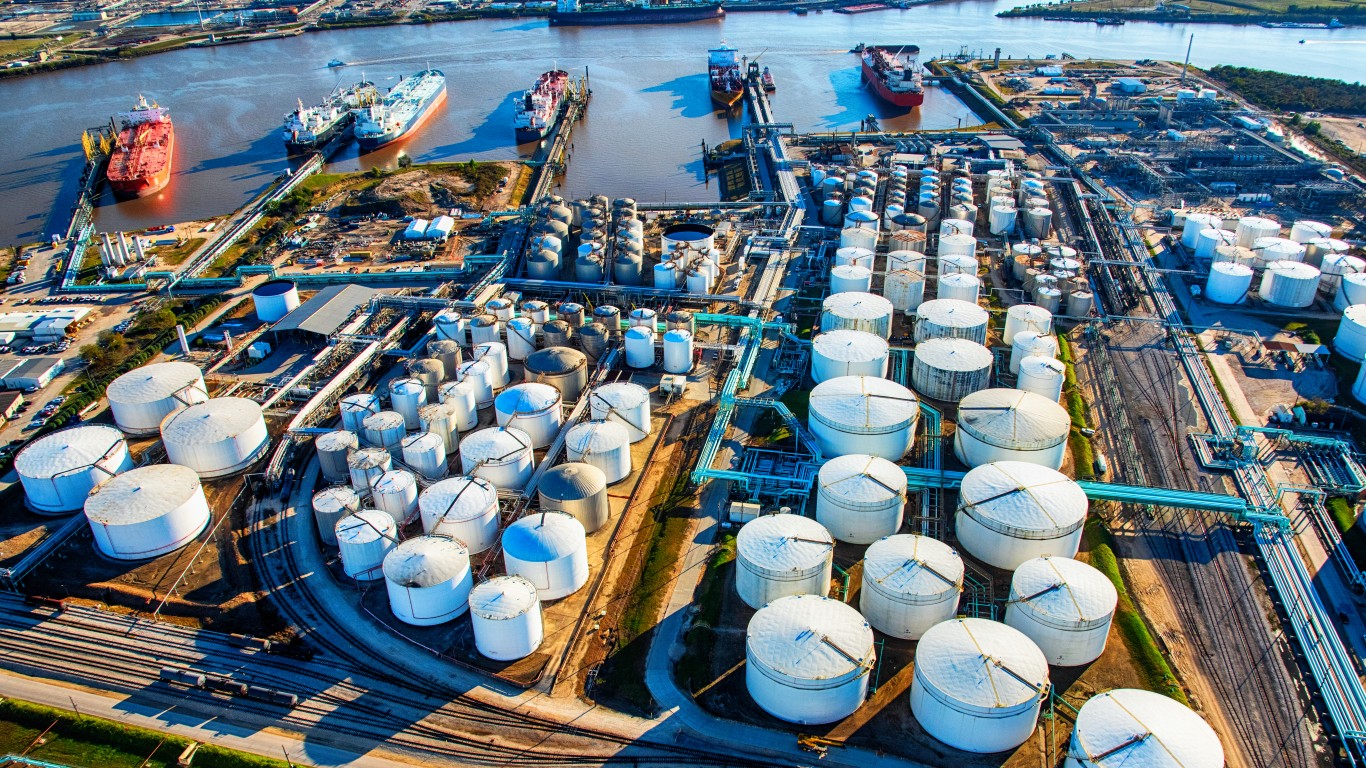Energy
Storage Crunch, Revved Up Saudi Production Promise More Pain for US Crude

Published:

Even without a staggering global economy due to the coronavirus outbreak, Saudi Arabia’s decision to boost production to 12.3 million barrels a day in April would have depressed crude prices and threatened to fill global storage tanks to the brim. The economic lockdown has just speeded things up.
According to a report from Lloyds, the Saudis have chartered 21 very large crude carriers (VLCCs) in the past few weeks, and nine of those are destined to be used as floating storage tanks. Each VLCC can hold 2 million barrels of crude oil. The Saudis have 84 tankers holding 127.4 million barrels already sailing in circles, Lloyds reported.
The Saudis also have been shipping about 1.3 million barrels a day to storage tanks in Egypt, according to Bloomberg, positioning it for future shipments into Europe.
Traders and refiners are expecting the price of Arab Light crude to drop by $3.50 to $3.75 for May deliveries (April deliveries are already essentially closed). Saudi Aramco is expected to release May pricing around April 5. When that announcement comes, Russia’s Urals Crude, currently trading at $19.60 a barrel (down nearly 10%) will have to respond.
The price war began when Russia refused in early March to cut production further. Saudi Arabia responded within days by dropping its price for April deliveries. Both the Russians and the Saudis want to force financially weakened U.S. shale producers to cut production from around 13 million barrels a day.
The benchmark OPEC basket of crude oil grades traded at $24.26 Tuesday morning, down 6.8% for the day, while West Texas Intermediate (WTI), the U.S. benchmark, traded at $20.66 (up nearly 3%) and Brent, the international benchmark, traded at $26.40 (basically flat).
At prices around $20 a barrel, the number of U.S. producers that can post a profit on new wells falls off a cliff. Currently producing wells stand a better chance of posting a profit, but shale well production drops off quickly after reaching a peak in around 12 to 16 months. Without new drilling, U.S. shale production has nowhere to go but down.
IHS Markit expects up to 10 million barrels a day of global production to be cut between April to June as oil storage fills up and output from financially strapped companies begins to fall: “If oil cannot be sold or stored, it cannot be produced.” The firm noted that about 1.2 billion barrels of global crude oil storage capacity was available early this year.
Saudi Arabia’s plan to raise production from around 12 million barrels a day to 13 billion may be harder to hit than the country’s rulers expect. Indrajit Sen, Oil & Gas Editor at GlobalData, notes that Saudi Aramco’s capital expenditures budget for 2020 has been set at $25 billion to $30 billion, a sharp decline from 2019 spending of $35.1 billion.
However, Sen continues, Saudi Aramco “will need to increase its investment in refurbishing and revamping its brownfield offshore and onshore assets to be able to raise its output capacity by 1 million [barrels per day] in the near term.”
For U.S. producers, that doesn’t offer much comfort. Bhushan Bahree, executive director at IHS Markit, explains:
Saudi Arabia and Russia are better positioned in a low-price environment to maintain or even increase production over the next two years compared to the United States. Their systems depend on conventional production, which has much lower decline rates compared to U.S. tight oil. A decline in upstream investment will impact short-term production capacity to a much lesser degree than in the United States.
If the Saudis can manage to boost production, IHS Markit sees a different global crude oil production leader by next year:
By fourth quarter 2021 we estimate U.S. crude oil production will be 8.8 [million barrels a day]—down 4.1 [million] from first quarter 2020 production. In contrast, output from Saudi Arabia is projected to be 1.8 [million barrels per day] higher with Russian production just slightly lower relative to first quarter 2020.
Retirement can be daunting, but it doesn’t need to be.
Imagine having an expert in your corner to help you with your financial goals. Someone to help you determine if you’re ahead, behind, or right on track. With SmartAsset, that’s not just a dream—it’s reality. This free tool connects you with pre-screened financial advisors who work in your best interests. It’s quick, it’s easy, so take the leap today and start planning smarter!
Don’t waste another minute; get started right here and help your retirement dreams become a retirement reality.
Thank you for reading! Have some feedback for us?
Contact the 24/7 Wall St. editorial team.